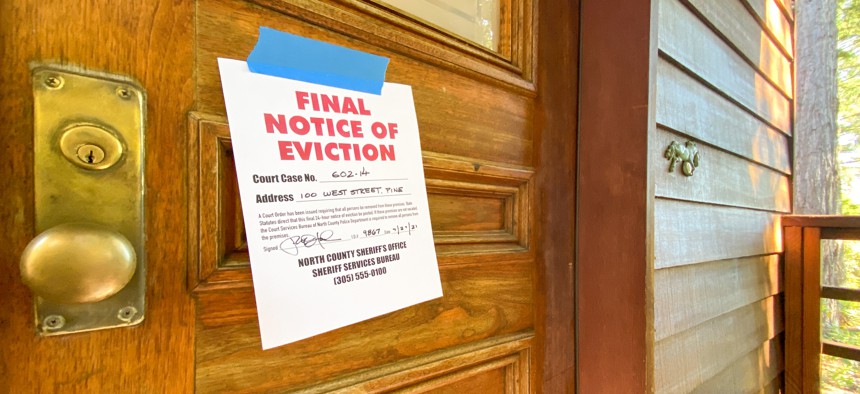Treasury Outlines How it Will Claw Back Rental Aid From Slow Spenders

iStock.com/Bill Oxford
The department plans to redistribute the money to jurisdictions that are moving faster to get it to struggling renters and landlords.
States and localities that miss certain targets to distribute a first round of federal rental aid will risk having to return some of that money beginning next month and will forfeit any money not spent by March of next year, under new guidelines the U.S. Treasury Department issued on Monday.
Treasury plans to reallocate clawed back money to jurisdictions that have moved faster to spend down the aid. The department’s reallocation plans provide the first specifics on how much rental assistance funding could be at stake for jurisdictions that have been slow to spend the money.
The reallocation plan takes actual spending levels into account and penalizes jurisdictions if they do not submit a plan outlining steps to improve rental assistance program performance. Under the new guidance, any money from a first round of emergency rental assistance that is not spent by March 2022 will be deemed “excess funds” and required to be returned for reallocation to another jurisdiction.
Treasury plans to send the money to high-performing jurisdictions that have spent at least 65% of their first round of rental assistance and will begin accepting applications for the money on Oct. 15. Jurisdictions will be required to complete a form requesting a certain amount of funding and providing justification for that additional money.
Congress approved $46.5 billion in emergency rental assistance to respond to the economic impact of the coronavirus pandemic, allocating two tranches of money in December and March. But state and local governments have only dispersed $7.7 billion in emergency rental assistance to 1.4 million households across the country, the Treasury Department said in its latest update.
Jurisdictions that spend less than 30% of their rental assistance funding as of Sept. 30 will be required to return “excess funds,” according to the guidance released Monday. Treasury will determine a government’s excess funds by calculating the difference between the amount it has spent and 30% of its original allocation from the first tranche of rental aid funding.
Each month going forward, the spending threshold will rise by 5%. So by November, a government would have to have spent a sum equal to 40% of their allotment or risk losing funds.
The Treasury guidance requires any programs that have not obligated at least 65% of their first round of emergency rental assistance funds to submit improvement plans by Nov. 15 outlining steps they will take to distribute money more rapidly to eligible renters and landlords. If any of those jurisdictions fail to submit an adequate plan, the Treasury Department will designate 10% of their rental assistance money as “excess funds” deemed subject to reallocation.
A separate reallocation program will allow jurisdictions to voluntarily give up their rental assistance funds and seek to distribute the money within the same state.
Many state and local governments had to design emergency rental programs from scratch and it took time for them to craft eligibility rules and find partner organizations to spread the word to tenants. Some programs also adopted more stringent rules than others, which has slowed down the process of vetting applicants and approving payments.
Seeking to reduce the amount of time it took to get money to eligible renters, the Treasury Department has issued updated guidance to streamline the process.
“Many grantees have embraced Treasury's recommendations and were able to quickly disburse funds; others that initially struggled to build the necessary program infrastructure are now seeing increased progress after adopting Treasury's recommendations to speed up assistance,” wrote Deputy Treasury Secretary Adewale Adeyemo in a letter to program officials. “Still, some grantees have not demonstrated sufficient progress or intent to make changes in their programs to get resources into the hands of eligible tenants and landlords.”
The National Low Income House Coalition praised the requirement that low-performing jurisdictions submit improvement plans.
“Most of the slow spenders and poor performers are needlessly delayed by their own refusal to utilize proven best practices for speeding up the delivery of assistance,” said the group’s president and CEO Diane Yentel.
The Treasury Department said it will notify state and local programs in writing if any of their rental assistance allocation has been deemed excess funds and will provide further information about how the money is to be returned at that time.
Andrea Noble is a staff correspondent with Route Fifty.
NEXT STORY: Can the US Create Universal Pre-K Without Repeating Past Mistakes?





